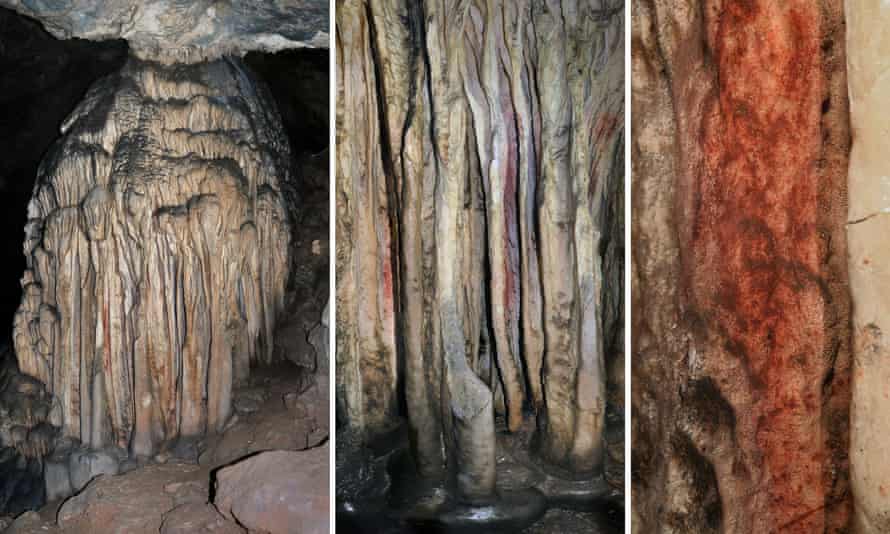.
A general view (left), medium close-up (middle) and extreme close up of a partly coloured stalagmite tower in the Spanish cave of Ardales, southern Spain.
Photograph: Joao Zilhao/ICREA/AFP/Getty Images
Photograph: Joao Zilhao/ICREA/AFP/Getty Images
Study says pigments on cave stalagmites were applied through ‘splattering and blowing’ more than 60,000 years ago
Neanderthals, long perceived to have been unsophisticated and brutish, really did paint stalagmites in a Spanish cave more than 60,000 years ago, according to a study published on Monday.
The issue had roiled the world of paleoarchaeology ever since the publication of a 2018 paper attributing red ocher pigment found on the stalagmitic dome of Cueva de Ardales to our extinct “cousin” species.
The dating suggested the art was at least 64,800 years old, made at a time when modern humans did not inhabit the continent.
But the finding was contentious, and “a scientific article said that perhaps these pigments were a natural thing”, a result of iron oxide flow, Francesco d’Errico, co-author of a new paper in the journal PNAS, told AFP.
Read the rest of this article..

No comments:
Post a Comment
Note: Only a member of this blog may post a comment.